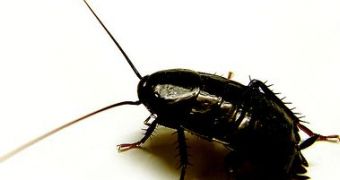Few people really like cockroaches, but they might just be of great help to medicine, scientists from the University of Nottingham suggests, after they found strong antibiotic properties in the brains of cockroaches and locusts.
Researchers from the School of Veterinary Medicine and Science made this discovery, which could lead to new treatments for multi-drug resistant bacteria.
What gives scientists hope is that experiments showed that the tissues of the brain and nervous system of the insects killed over 90% of Meticillin-resistant Staphylococcus aureus - MRSA and pathogenic Escherichia coli, without harming human cells.
This work is presented by postgraduate researcher Simon Lee at the Society for General Microbiology's autumn meeting, held in Nottingham between the 6 and 9 September 2010.
The research has identified up to nine different molecules in the insect brain tissues that were toxic to bacteria, and these substances could be the start for new treatments against multi-drug resistant bacterial infections.
Scientists are now investigating the properties of the antibacterial molecules, hoping they “could eventually be developed into treatments for E. coli and MRSA infections that are increasingly resistant to current drugs”.
Lee added that “these new antibiotics could potentially provide alternatives to currently available drugs that may be effective but have serious and unwanted side effects.”
It did not come as a surprise for scientists to find that insects had their own antimicrobials because “insects often live in unsanitary and unhygienic environments where they encounter many different types of bacteria, it is therefore logical that they have developed ways of protecting themselves against micro-organisms,” explained Lee.
Lee's work was supervised by Dr Naveed Khan, Associate Professor of Molecular Microbiology, who said that “superbugs such as MRSA have developed resistance against the chemotherapeutic artillery that we throw at them.
“They have shown the ability to cause untreatable infections, and have become a major threat in our fight against bacterial diseases.
“Thus, there is a continuous need to find additional sources of novel antimicrobials to confront this menace.”

 14 DAY TRIAL //
14 DAY TRIAL //